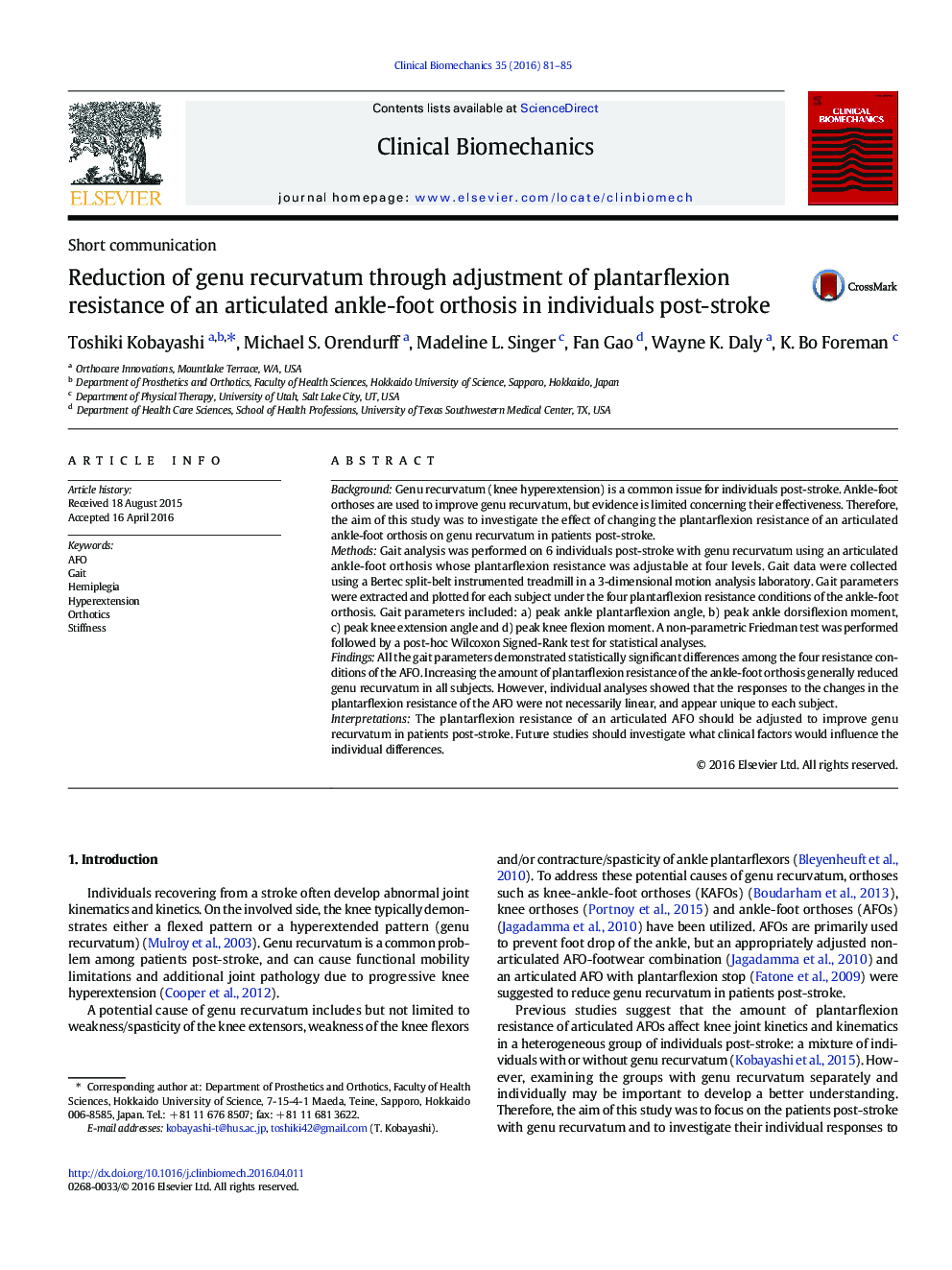| Article ID | Journal | Published Year | Pages | File Type |
|---|---|---|---|---|
| 4050117 | Clinical Biomechanics | 2016 | 5 Pages |
•Genu recurvatum (knee hyperextension) is common in patients post-stroke.•Plantarflexion resistance of ankle-foot orthosis affects genu recurvatum.•Individual responses to changes in plantarflexion resistance are unique.•Plantarflexion resistance should be adjusted to improve genu recurvatum.
BackgroundGenu recurvatum (knee hyperextension) is a common issue for individuals post-stroke. Ankle-foot orthoses are used to improve genu recurvatum, but evidence is limited concerning their effectiveness. Therefore, the aim of this study was to investigate the effect of changing the plantarflexion resistance of an articulated ankle-foot orthosis on genu recurvatum in patients post-stroke.MethodsGait analysis was performed on 6 individuals post-stroke with genu recurvatum using an articulated ankle-foot orthosis whose plantarflexion resistance was adjustable at four levels. Gait data were collected using a Bertec split-belt instrumented treadmill in a 3-dimensional motion analysis laboratory. Gait parameters were extracted and plotted for each subject under the four plantarflexion resistance conditions of the ankle-foot orthosis. Gait parameters included: a) peak ankle plantarflexion angle, b) peak ankle dorsiflexion moment, c) peak knee extension angle and d) peak knee flexion moment. A non-parametric Friedman test was performed followed by a post-hoc Wilcoxon Signed-Rank test for statistical analyses.FindingsAll the gait parameters demonstrated statistically significant differences among the four resistance conditions of the AFO. Increasing the amount of plantarflexion resistance of the ankle-foot orthosis generally reduced genu recurvatum in all subjects. However, individual analyses showed that the responses to the changes in the plantarflexion resistance of the AFO were not necessarily linear, and appear unique to each subject.InterpretationsThe plantarflexion resistance of an articulated AFO should be adjusted to improve genu recurvatum in patients post-stroke. Future studies should investigate what clinical factors would influence the individual differences.
